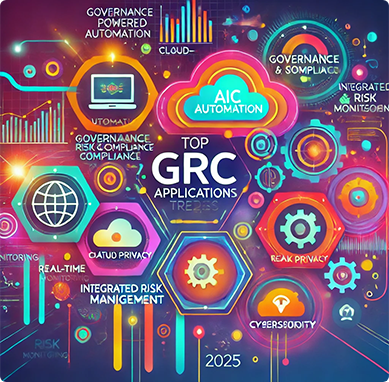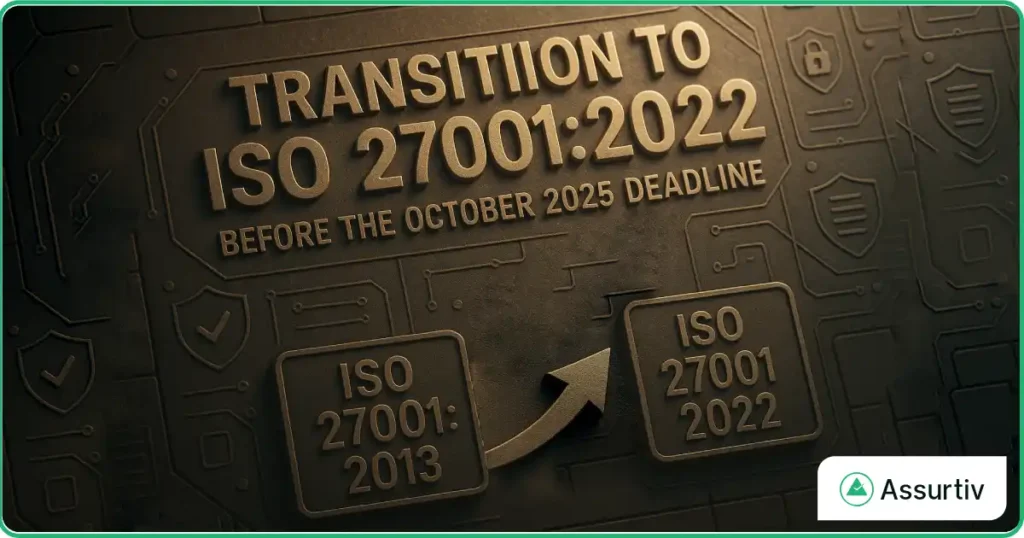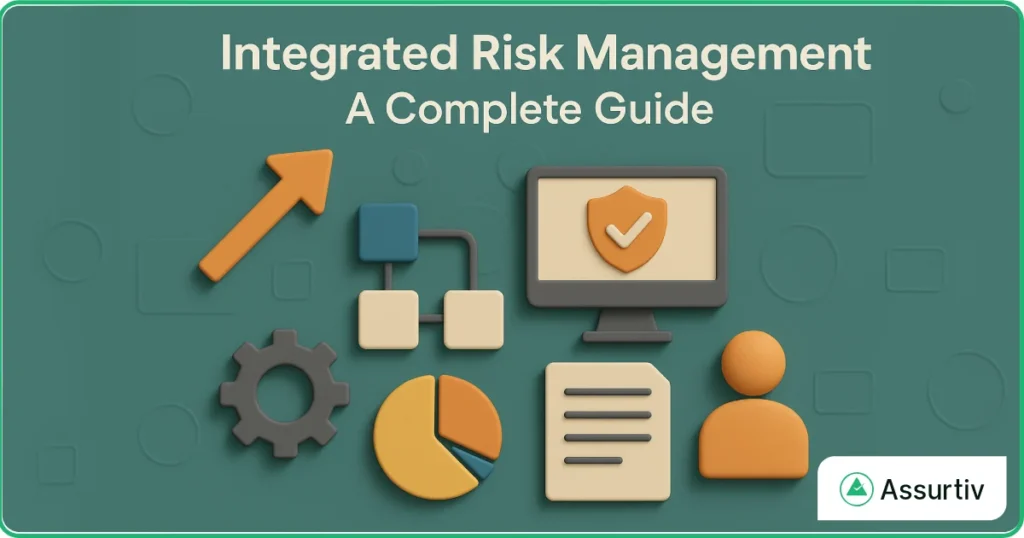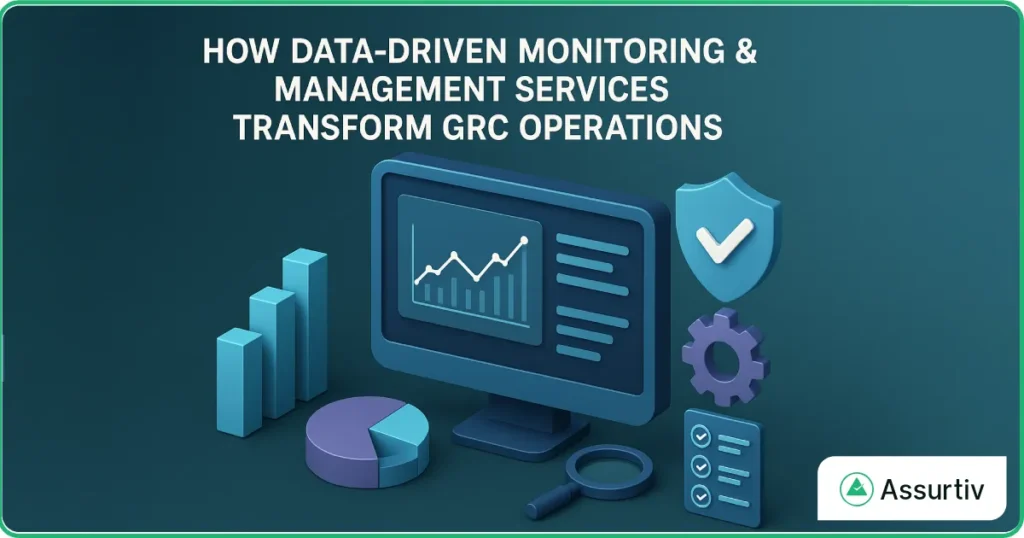The Future of GRC: Top Trends, Emerging Challenges and How AI is Shaping 2025
2 Jan 2025
 As we head into 2025, Governance, Risk, and Compliance (GRC) is getting a major upgrade. With the power of Artificial Intelligence (AI), businesses are changing the way they manage risks, stay compliant, and make smarter decisions. Out with the old and in with a new, more efficient approach towards the future of GRC. In this blog, we’ll cover the biggest GRC trends for 2025, the challenges companies have faced so far, and how AI is set to transform the way businesses handle GRC. Let’s take a look at what’s coming next!
As we head into 2025, Governance, Risk, and Compliance (GRC) is getting a major upgrade. With the power of Artificial Intelligence (AI), businesses are changing the way they manage risks, stay compliant, and make smarter decisions. Out with the old and in with a new, more efficient approach towards the future of GRC. In this blog, we’ll cover the biggest GRC trends for 2025, the challenges companies have faced so far, and how AI is set to transform the way businesses handle GRC. Let’s take a look at what’s coming next!
Top GRC Trends for 2025
- AI and Automation AI-powered GRC systems will automate many manual tasks, such as compliance checks and risk assessments, enhancing efficiency and reducing human error. This automation will not only help businesses stay compliant but also predict and mitigate risks before they escalate.
- Data Privacy and Cybersecurity Focus As cyber threats grow more complex, businesses will rely on advanced GRC systems to ensure data protection. Compliance with regulations like GDPR and CCPA will require sophisticated risk management tools integrated into GRC platforms.
- Cloud-Based GRC Solutions Cloud adoption is rapidly increasing, and by 2025, most organizations will rely on cloud-based GRC software. These platforms offer scalability, flexibility, and real-time collaboration, making them ideal for global enterprises.
- Integrated Risk Management (IRM) Moving from siloed GRC systems, companies will favor integrated solutions that provide a holistic view of risks across the organization. IRM ensures that risks are assessed, mitigated, and reported consistently.
- Continuous Monitoring and Real-Time Analytics Real-time risk monitoring will be crucial for organizations that need to adapt to rapid changes in the business environment. Continuous monitoring will allow businesses to act swiftly on emerging risks, avoiding costly setbacks.
Challenges Faced in GRC
- Regulatory Complexity Organizations with global operations often struggle to keep up with the varying regulatory requirements across different regions. Compliance management systems must be dynamic to adapt to changing regulations.
- · Data Silos and Fragmented Processes Disjointed processes and data silos hinder effective risk management. Companies need a unified GRC system that integrates data from all departments to streamline risk assessment and reporting.
- Manual Processes and Errors The reliance on manual intervention in risk management and compliance has led to inefficiencies and the risk of human error. Automation is essential to improve accuracy and save time.
- Lack of Real-Time Visibility Traditional GRC tools provided periodic risk assessments, making it difficult for companies to address issues before they arise. Real-time risk monitoring is now a necessity to stay ahead of potential threats.
Mitigating Challenges in 2025
- AI-Powered Automation AI will automate repetitive tasks like reporting, compliance checks, and policy updates, freeing up time for strategic decision-making. By leveraging AI for automation, businesses can also eliminate the risk of human error.
- Centralized Data and System Integration Integrating GRC tools with other enterprise systems (e.g., CRM, ERP) will help eliminate data silos and provide a single source of truth, enabling better risk management and more accurate decision-making.
- Real-Time Risk Monitoring with AI’s ability to monitor risks in real time, organizations can respond proactively to potential threats. This shift from reactive to proactive risk management will become a standard in GRC practices.
- Enhanced Cybersecurity GRC systems must be fortified with advanced security measures to protect against the increasing threat of cyberattacks. AI can help detect and mitigate these risks before they affect the organization.
- Cross-Team Collaboration Integrated risk management fosters collaboration across departments. By using a unified GRC system, teams can collaborate more efficiently to assess and address risks, ensuring a comprehensive and coordinated approach.
Leveraging AI in GRC Software
AI will be a game-changer for GRC in 2025. Its ability to:
- Predict Risks: AI can analyze vast amounts of data and identify potential risks before they materialize.
- Natural Language Processing (NLP): AI will enable organizations to better interpret regulations and legal documents, ensuring compliance without manual oversight.
- Smart Reporting: AI-driven GRC systems can generate insightful reports with customized recommendations, saving time and improving risk mitigation efforts.
Conclusion: ASSURTIV – Your AI-Powered GRC Solution
As GRC continues to evolve, ASSURTIV GRC software, powered by AI, offers a comprehensive solution for all your risk management needs. With predictive analytics, automated compliance checks, and real-time monitoring, ASSURTIV enables organizations to stay ahead of risks, ensure compliance, and optimize their governance processes. By adopting ASSURTIV, businesses can streamline their GRC strategies, reduce errors, and confidently navigate the complexities of the modern regulatory landscape.




